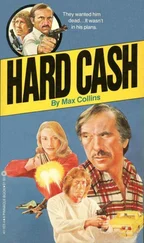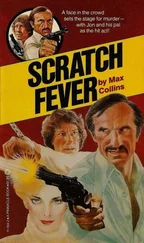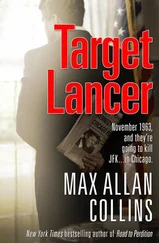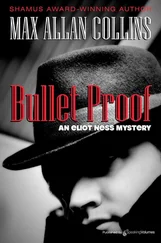“Okay, I have a gun in there. All right?”
“How’d it get there? Or did it just grow there, organically?”
“I put it there, what do you think?”
“Boone, that’s it. That’s the end.” He started turning the key in the ignition.
She reached for his hand and stopped him. Gently.
“The gun used to be Patrick’s. He left it with me.”
“He took the furniture, and left the gun. What a guy.”
“He didn’t leave it on purpose. He forgot it. Look, I don’t like the damn thing. I never liked it when Patrick kept it in the house.”
“Which is why you keep it in the car.”
“Crane, think. You wouldn’t be here if you didn’t figure there was a good possibility Mary Beth was murdered.”
He said nothing.
“And if that is what happened to Mary Beth,” she continued, “and if those other ‘suicide’ victims were murdered, too, then looking into it, like we’re doing, could be a little risky, right?”
He said nothing.
“So,” she said, “we just might have to protect ourselves.”
She took the gun — a .38 — out of the glove compartment.
“Give me that!” Crane said.
She did.
“This isn’t loaded, is it?” he asked.
“Of course it’s loaded.”
He stuck it under the seat.
“You got a choice, next time,” he said, his face feeling hot. “You can bring me along, or the gun. Not both.”
“There’s the truck again.”
He turned and looked back at the loading area. The flatbed, its tarp tied over a full load, was wheeling out. No one, not even the hard hat that had been there before, was around; no one checked them out: the clearing booth was still empty.
Boone sat recording all this with the Nikon.
The truck turned right onto the blacktop, away from them.
“I better drive.” Boone said.
“No,” said Crane. “I can handle it.”
He waited a few minutes and then pulled out of the Kemco lot, after the flatbed.
“One of its back lights is broken,” Boone said, pointing.
Ahead, one of the taillights on the rig glowed white.
“That’s a break,” she said. “You can stay back and still not lose sight of him.”
Crane sat forward, back straight, hands gripping the wheel, intensity squeezing the nervousness, the fear, right out of him. A couple times he felt himself creeping up too close on the truck — which was going a nice legal fifty-five — and Boone eased him back. There were a few other cars on the road, and occasionally he was able to put one of them between him and the truck, the tarp on the back of which was flapping loose a bit, giving them a glimpse now and then of the black drums of waste sitting bunched in the back like illegal immigrants.
“Don’t sweat losing him,” she said. “I think I know where he’s headed.”
And she did.
From the blacktop that wove through Garden State farmland, the truck went to a four-lane highway, where it was easy to stay way back and not lose track of the white light on the truck’s tail.
“You know where he’s headed now?” Crane asked Boone.
“Maybe,” she said.
Soon the truck turned off onto a toll bridge.
They pulled off. Waited till the truck was across. Then followed.
Once over the bridge, Boone said, “Welcome to Pennsylvania, Crane.”
They were still on a four-lane.
“I’ve lost him,” Crane said, hitting the steering wheel with the heel of his hand.
“No,” said Boone, pointing. “He’s just turning off. Up to the right. See him?”
And there was the white light of the rig as it turned onto an off-ramp.
Crane followed suit.
After fifteen miles of sporadic two-way traffic on a primary road, the truck turned off onto a blacktop.
“Has he spotted us?” Crane asked.
“No.”
“He could be leading us out into nowhere to deal with us, you know.”
“I don’t think so. You’ve stayed well back. He hasn’t seen us.”
“I’m going past it anyway.”
He did, not turning off at the blacktop, glancing down it as they drove by to see if the truck had pulled over, to wait for them.
But it hadn’t: the white eye was getting smaller as the truck lumbered down the blacktop.
Crane turned around on a side road and went back. Followed the truck down the blacktop.
Or tried to.
“This time I did lose him,” he said. “I got overcautious, damnit.”
“Keep going.”
“It’s no use. I blew it. He’s gone.”
“What’s that?”
“What?”
“There’s a sign up there.”
And there was: white letters on green, SANITARY LANDFILL, with an arrow to the right, and another blacktop.
Crane pulled in. Slowly. Just around the corner was a second sign, black letters on white: DEAD END.
He paused. “What do you think?”
“We’ve come this far,” she said.
He drove down the narrow blacktop. The clear, moonlit night gave them a good view of the land on either side: at the right the land was flat, with bare, black clay, ground that had been turned over, like farmland prepared for planting; at the left another stretch of similar ground dropped off into a deep man-made gulley, the earth scarred by bulldozer tracks, the ground ripped at various seams, as if the aftermath of an earthquake.
“Cut your lights,” Boone told him.
He did.
They came around a bend and the road ended and opened out into a graveled area, just in front of a chain-wire fence with gates and two signs, a small one — ALL TRUCKS MUST BE COVERED — and a larger one — SANITARY LANDFILL, with a permit number listed underneath, operating hours (8 AM to 4 PM Monday thru Friday, 8 AM to Noon Saturday), and regulations (Public access during operating hours only; Scavenging not permitted; Unauthorized disposal punishable by $100 fine). Beyond the chain-wire fence were a couple of tin sheds, a large one at left for equipment storage, probably, a smaller one at right that was apparently the office. Several bulldozers stood unattended. At the left and right were high ridges of earth that blocked anything else along the horizon from view, from this vantage point at least. In the center was the drop-off of a landfill ditch.
The flatbed was already inside the chain-wire fence. The two guys from the truck — the bruiser in the thermal jacket and his partner, a tall skinny guy in denim work clothes and heavy gloves — got down out of the truck and were joined by a couple of guys in hard hats and work jackets. One of the hard hats began using a small forklift truck to unload the fifty-five-gallon barrels from the flatbed. The truckers helped him, guided the drums onto the forklift. The other hard hat watched and waited.
Boone used her Nikon.
It took over an hour to unload the truck and haul each drum over and dump it. Crane wondered why he and Boone hadn’t left yet; but she was still taking pictures, onto her second roll, now.
Then the hard hat who’d been standing, watching, climbed up on one of the bulldozers and started it up. It rumbled over to the landfill ditch. From where Crane and Boone were they couldn’t see it, exactly, but it was clear what the bulldozer was doing: the drums were being covered with a layer of dirt.
“Those truckers won’t be needing to hang around,” Crane whispered. “We better take off before they do.”
“Okay,” Boone said, still snapping the Nikon.
Crane backed out, around the corner, turning the car around in the road in five long, slow turns, expecting the headlights of the flatbed to bear down on them momentarily.
But that didn’t happen.
And they exited the blacktop onto the other blacktop and drove and, as they neared the four-lane that would lead them to the toll bridge and New Jersey, Boone said, “There’s a motel over there. What do you think? I’m dead.”
Читать дальше












